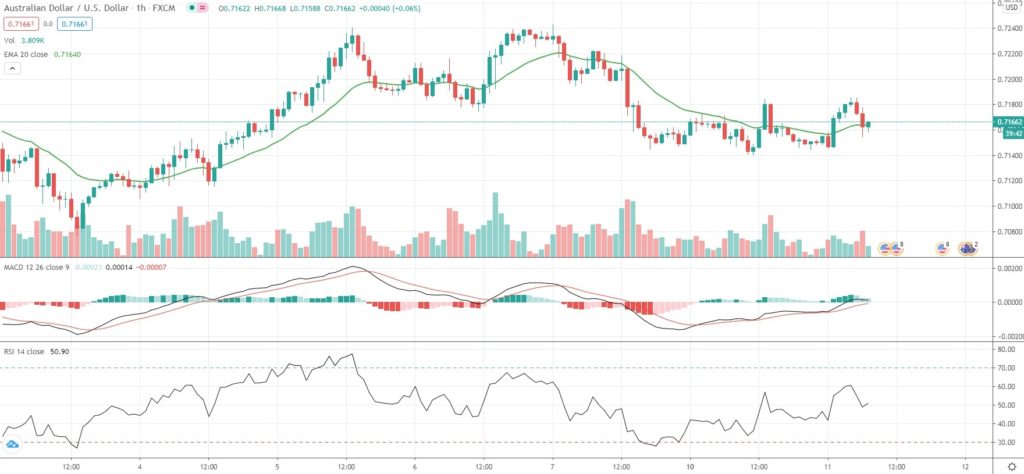After pulling back from last Friday’s 18-month high, AUD/USD was attempting a rebound from the 0.7135-0.7145 area of support in early European session on Tuesday, but gains may be capped as investor hopes of a deal on US fiscal stimulus seemed to have led to a pause in recent US Dollar depreciation.
The greenback was holding overnight gains against a basket of six major peers, with the DXY being up 0.04% on Tuesday to 93.65.
US President Trump signed executive orders over the past weekend that restored part of enhanced unemployment payments and suspended payroll taxes.
“Compared to market consensus of a stimulus deal worth $1 trillion-$1.5 trillion, economic boosts from the announced measures would be clearly smaller,” Takafumi Yamawaki, head of Japan rates and FX research at J.P. Morgan, said.
“Looking at market reactions, investors appear to think that there will be some sort of deal eventually,” Yamawaki added.
Yesterday White House officials and congressional Democrats said they intended to resume coronavirus aid package talks, but it was uncertain if the differences between both sides would be bridged.
Meanwhile, in Australia, the latest survey by National Australia Bank showed earlier Tuesday that business sentiment had deteriorated in July following the announcement of stage 4 restrictions in Melbourne. Confidence worsened across all industries, with the largest decrease being observed in Australian mining sector.
Market players were also keeping track of situation surrounding diplomatic relations between Beijing and Washington. Chinese authorities imposed sanctions on 11 US citizens in response to US sanctions on officials from China and Hong Kong. At the same time, US Treasury Secretary Steven Mnuchin said that corporate entities from China and elsewhere that were not compliant with accounting standards would be delisted from US stock exchanges at the end of next year.
“What used to be a dispute over trade has now evolved into something about ideology,” Daisuke Uno, chief strategist at Sumitomo Mitsui Bank, said.
“On the whole, the U.S.-China tensions could lead to dollar selling but the negative impact will not be limited to the U.S. Stagnant trade between them could hurt the (global) economy.”
Trade negotiations between the United States and China are scheduled to be resumed on August 15th, after having been at a standstill for several months.
As of 7:17 GMT on Tuesday AUD/USD was edging up 0.23% to trade at 0.7165, while moving within a daily range of 0.7145-0.7186. Last Friday it climbed as high as 0.7243, or its strongest level since February 6th 2019 (0.7246). The major pair advanced 3.48% in July, which marked its fourth consecutive month of gains. It rose another 0.25% during the first week of August.
On today’s economic calendar, at 12:30 GMT the Bureau of Labor Statistics is to report on the US Producer Price Index performance. Annual producer prices probably decreased 0.6% in July, according to market consensus, slowing down from a 0.8% drop in June.
Meanwhile, the nation’s annualized core producer price inflation, which excludes prices of food and energy, probably accelerated to 0.4% in July from 0.1% in June.
Bond Yield Spread
The spread between 2-year Australian and 2-year US bond yields, which reflects the flow of funds in a short term, equaled 15.0 basis points (0.150%) as of 6:15 GMT on Tuesday, up from 13.7 basis points on August 10th.
Daily Pivot Levels (traditional method of calculation)
Central Pivot – 0.7158
R1 – 0.7175
R2 – 0.7202
R3 – 0.7219
R4 – 0.7237
S1 – 0.7131
S2 – 0.7114
S3 – 0.7088
S4 – 0.7061






